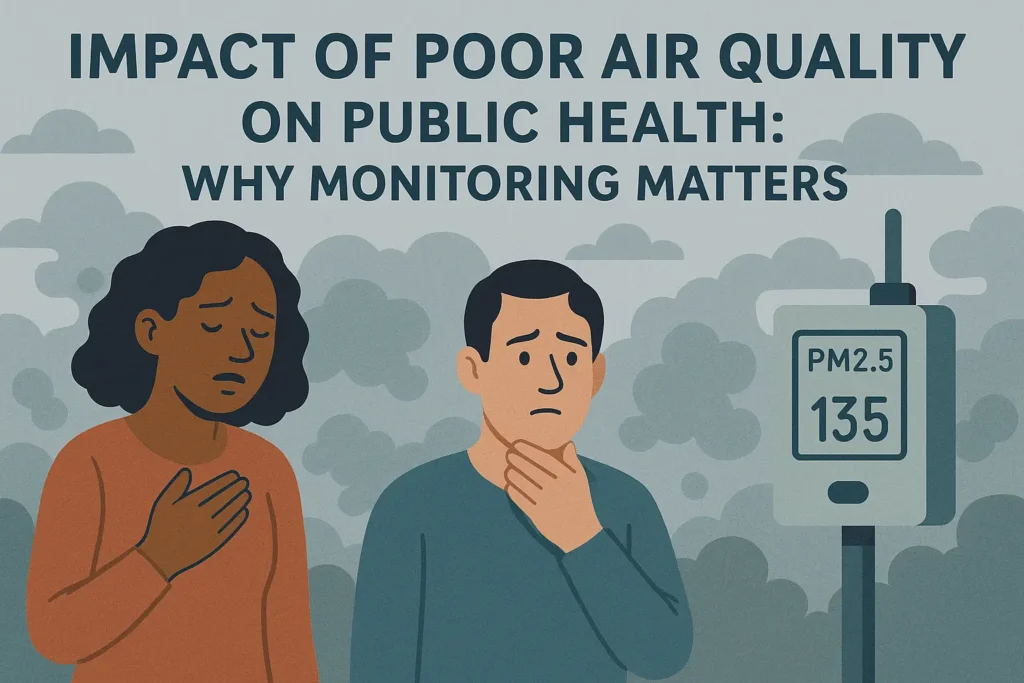7 Critical Reasons Why Air Quality Monitoring Matters in 2025
Air quality has become one of the most important topics in 2025 as people across the globe are waking up to its impact on health and the environment. But why does monitoring air quality matter now more than ever? In this article, we will explore why air quality monitoring is essential, how it protects your health, safeguards the environment, and the tools available to measure it.
Understanding Air Quality and Its Importance
The term air quality refers to the cleanliness of the air we breathe. It is determined by the concentration of pollutants such as PM2.5, PM10, nitrogen dioxide, sulfur dioxide, carbon monoxide, and ozone. Poor air quality can trigger health problems ranging from mild irritation to severe respiratory and cardiovascular diseases.
Monitoring air quality helps individuals and governments understand pollution patterns, anticipate health risks, and implement effective strategies to reduce exposure. In 2025, with climate change, urbanization, and industrial growth, monitoring air quality is more crucial than ever.
1. Protecting Human Health
The most immediate benefit of monitoring air quality is protecting human health. Research shows that prolonged exposure to poor air quality increases the risk of asthma, lung cancer, heart disease, and strokes.
By tracking air quality, health agencies can issue warnings, enabling people to avoid high-pollution areas. Schools, hospitals, and vulnerable communities rely on real-time air quality data to take protective measures.
2. Reducing Environmental Damage
Poor air quality doesn’t just affect humans; it damages plants, animals, and ecosystems. Pollutants such as nitrogen oxides and sulfur dioxide contribute to acid rain, harming soil and water quality. Monitoring air quality allows governments to identify pollution hotspots and enforce environmental regulations effectively.
3. Supporting Smart City Initiatives
In 2025, cities are increasingly implementing smart technologies to improve residents’ quality of life. Real-time air quality monitoring is a cornerstone of smart city planning. Sensors across cities provide data to optimize traffic flow, reduce industrial emissions, and maintain green spaces, ensuring better air quality for everyone.
4. Informing Policy and Regulations
Governments rely on accurate air quality data to draft regulations and enforce emission standards. For instance, cities with poor air quality can introduce car restrictions, promote electric vehicles, or enhance public transportation. Consistent monitoring ensures policies are data-driven and effective in reducing pollution levels.
5. Raising Public Awareness
Monitoring air quality also plays a vital role in public education. Awareness campaigns based on real air quality data help people understand the risks associated with pollution and motivate behavioral changes. Whether it’s using masks, installing indoor air purifiers, or avoiding outdoor activities during high-pollution days, informed citizens make healthier choices.
6. Encouraging Industrial Accountability
Industries are major contributors to poor air quality, releasing pollutants into the atmosphere. Continuous air quality monitoring can identify non-compliant factories, forcing them to adopt cleaner technologies. Transparency in industrial emissions encourages companies to prioritize sustainable practices and improve environmental responsibility.
7. Tools and Methods for Monitoring Air Quality
In 2025, multiple tools are available for air quality monitoring:
Portable Air Quality Sensors: Ideal for personal and home use. They measure pollutants like PM2.5 and CO₂ in real time.
Fixed Outdoor Stations: Placed in urban or industrial areas to provide continuous air quality data.
Mobile Applications: Allow individuals to access real-time air quality data and alerts.
Satellite Monitoring: Provides a large-scale view of pollution trends across regions.
These tools make air quality data accessible, actionable, and reliable for both individuals and authorities.
Future of Air Quality Monitoring in 2025
Looking ahead, air quality monitoring will continue to evolve with smarter sensors, predictive analytics, and integration with AI. Cities will have real-time dashboards showing pollution levels, and individuals will receive customized alerts based on their location and health conditions.
Conclusion
In 2025, understanding and monitoring air quality is no longer optional—it’s essential. From protecting human health to supporting environmental sustainability, the benefits of continuous air quality monitoring are clear. Governments, industries, and individuals all have roles to play in ensuring cleaner, healthier air for everyone.
By using advanced monitoring tools, staying informed, and taking preventive actions, we can reduce pollution, protect our health, and create a safer environment for generations to come.


